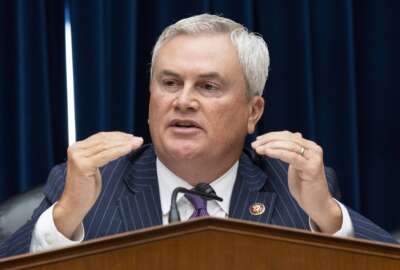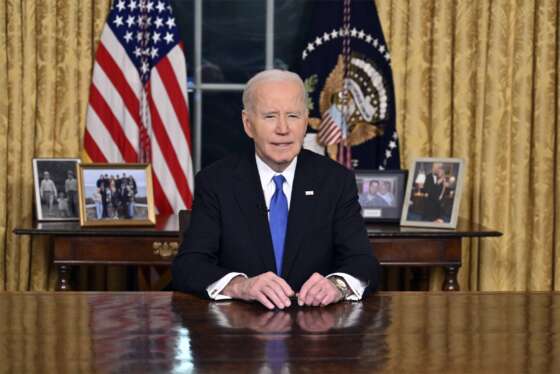Acquisition workforce, contract management top CAO priorities
Improving contract management and workforce development and training the most important areas federal chief acquisition officers and senior procurement executives...
Improving contract management and workforce development and training are the most important areas federal chief acquisition officers and senior procurement executives are focusing on in 2012.
An anonymous email survey of CAOs and SPEs by Federal News Radio found 85 percent of the respondents said they believe a better trained workforce is the best tool to reduce contracts spending and save money.
CAOs and SPEs also said improving contract management ranks high among their priorities. It received an average ranking of 3 out of 10.
About 13 percent of the 52 CAOs and SPEs surveyed responded to the survey conducted in November 2011.
“Agencies are expected to make significant changes while the acquisition workforce skills and number of personnel is not keeping pace. Budget cuts are going to negatively impact the ability to recruit, train, and retain the personnel needed to implement major changes,” one respondent wrote.

Many of the priorities survey respondents highlighted closely follow those outlined by the Office of Federal Procurement Policy over the last three years.
“I didn’t come to the priorities we had by sitting in a cave and staring at my navel. I came to them by listening and watching what your problems were,” said Dan Gordon, who just retired from OFPP Dec. 31 and now is associate dean of the George Washington University law school in Washington. “Our problems were among other things we focused for at least a quarter of a century who should get the contract. We didn’t focus enough on what comes before that and what comes after that.”
Gordon said during a discussion In Depth with Francis Rose agencies need to develop acquisition plans and manage contracts after the award is made.
Reducing the number of high-risk contracts will continue to be a high priority among CAOs and SPEs, and 71 percent say they already have cut the use of these contracts.
OFPP reported in July agencies decreased by $1 billion in 2010 the amount of money they spent on high risk contracts, such as time and materials.
But interestingly enough, only 14 percent of the respondents said reducing cost-reimbursement type contracts would save money or reduce contract spending.
“Inability to hire due to budgeting make this more difficult,” wrote one respondent.
(Story continues below) 
CAOs and SPEs also said implementing strategic sourcing was a high priority (average rank five) and could save the government money (71 percent).
Two commenters said better acquisition planning and cost-pricing estimating would save money and reduce contracting.
And another respondent highlighted a common complaint about how agencies spend money. “Reduce the number of GAO and OMB directives, data calls and other politically motivated initiatives.”
A culture change
Gordon said the strategic-sourcing blanket purchase agreement for office supplies was the best example of the difference this approach has made.
He said the General Services Administration did the hard work by persuading agencies that they would get better prices and better service by using the governmentwide BPAs.
“People told us when we first started two-and-a-half years ago, we’d never succeed. Something like $200 million in office supplies purchases ran through those BPAs in the last fiscal year. It’s a culture change, but we made real progress.”
A majority of the CAOs and SPEs said Dan Gordon’s decision to retire Dec. 31 as OFPP administrator would have a big impact on the acquisition community.
“We will miss Dan. Hopefully his replacement will have the energy and knowledge that he brings,” said one respondent.
Gordon’s retirement comes as many of his initiatives — mythbusters and AcqStat sessions — are just beginning to take hold.
Grading Gordon’s legacy
And the survey shows some uneasiness with these programs. Almost 43 percent of the respondents said it was too early to tell whether the mythbusters campaign was having an impact on the acquisition community, while 28 percent say both its helping agencies and it’s not changing how agencies work with industry.
More than a third of the respondents said AcqStat sessions have not changed the way they work, while 28 percent said both the meetings have been a major help and it’s too early to tell their impact.
“They are of some help but not major,” one respondent wrote. “Requires significant efforts but does not get substantial returns.”
Almost three quarters of the respondents also don’t believe the focus on suspension and debarment is warranted.
“Better focus on past performance would be more valuable,” said one respondent.
Another respondent said more emphasis is needed on training the workforce and less on oversight.
“Companies need to understand in those rare cases when there is an abuse, the government is not going to take it lying down, ” Gordon said, citing the Small Business Administration’s decision to suspend companies last year for abusing the Alaskan Native Corporation (ANC) program.
“That got people’s attention and I think that is a healthy thing. I think you have to be willing to say, ‘Yes, we will have an unhappy contractor.’ But we are not going to use the tool when it’s not appropriate. When it is appropriate, we will use it even if it makes people unhappy.”
Growing the workforce
Overall, the CAO and SPE community agree the more attention that can be paid to hiring and training contracting officers, contracting officer’s representatives and others in the acquisition field, the better the government will be in the long run.
Gordon said the acquisition workforce continued to grow as part of the Obama administration’s goal to rebalance the contractor-agency relationship.
But the goal was never wholesale insourcing, he added.
While he didn’t remember exactly how many jobs were insourced to agencies, Gordon said it wasn’t a large number.
“The intent was never to do enormous numbers. I felt like the changes we made set the right tone. I don’t think agencies feel pressure today not to outsource for some ideological reason, and not to insource. They are exactly where I think they should be — deciding what makes sense and not following some pressure to meet some ideological goal.”
RELATED STORIES
Gordon stresses future continuity as he prepares to leave
OFPP’s Gordon reflects on mythbusters, acquisition workforce
Copyright © 2025 Federal News Network. All rights reserved. This website is not intended for users located within the European Economic Area.
Jason Miller is executive editor of Federal News Network and directs news coverage on the people, policy and programs of the federal government.
Follow @jmillerWFED







